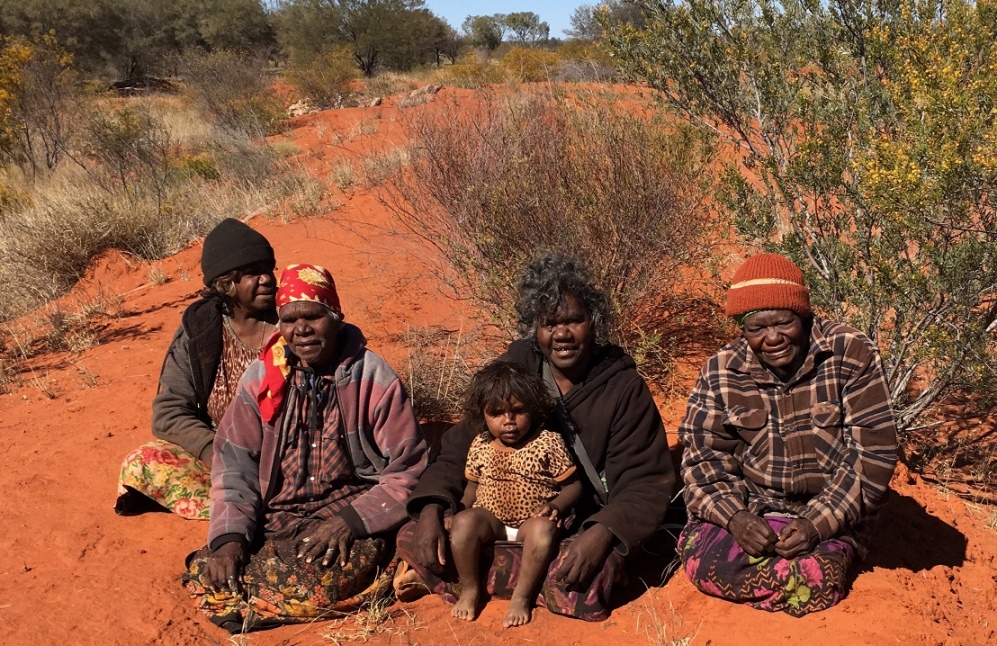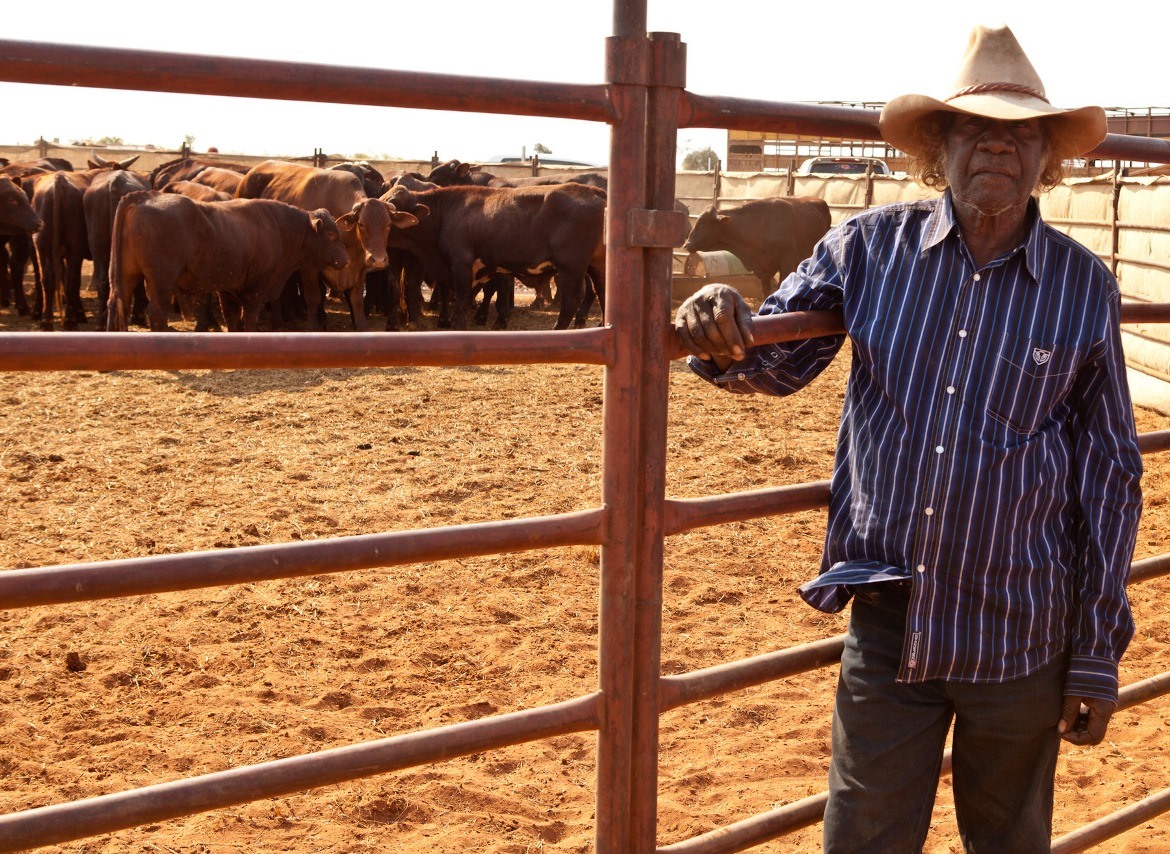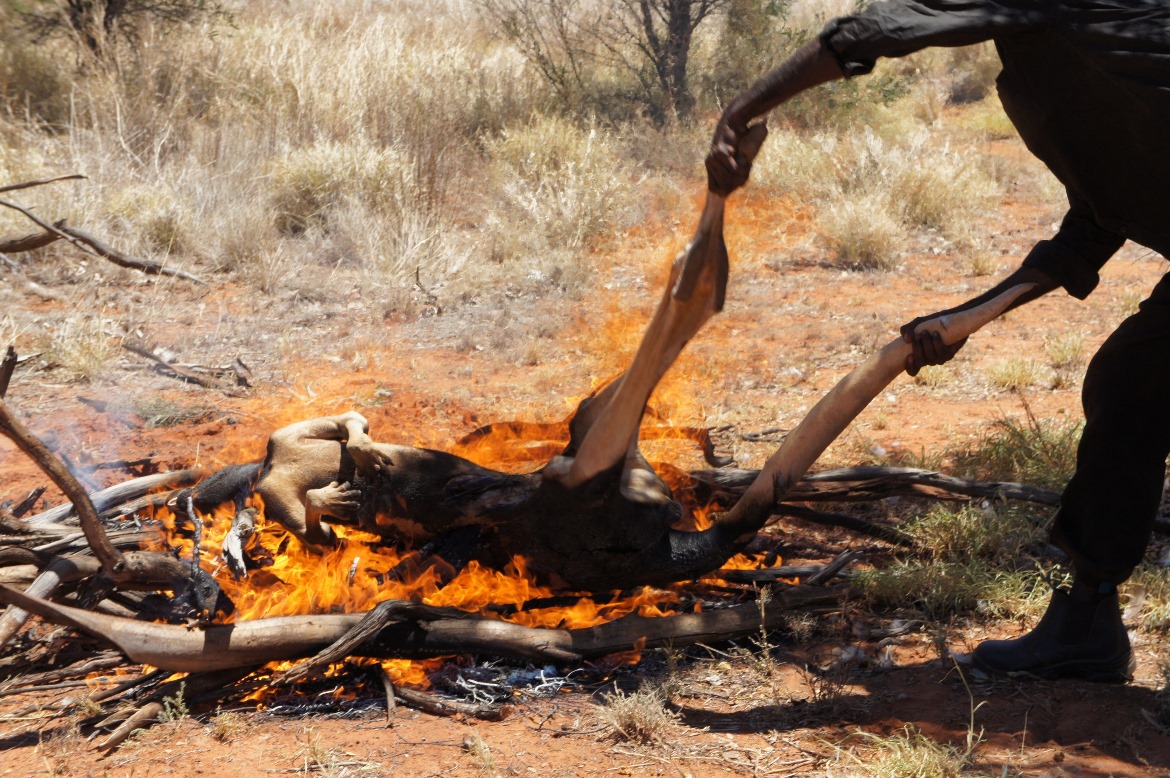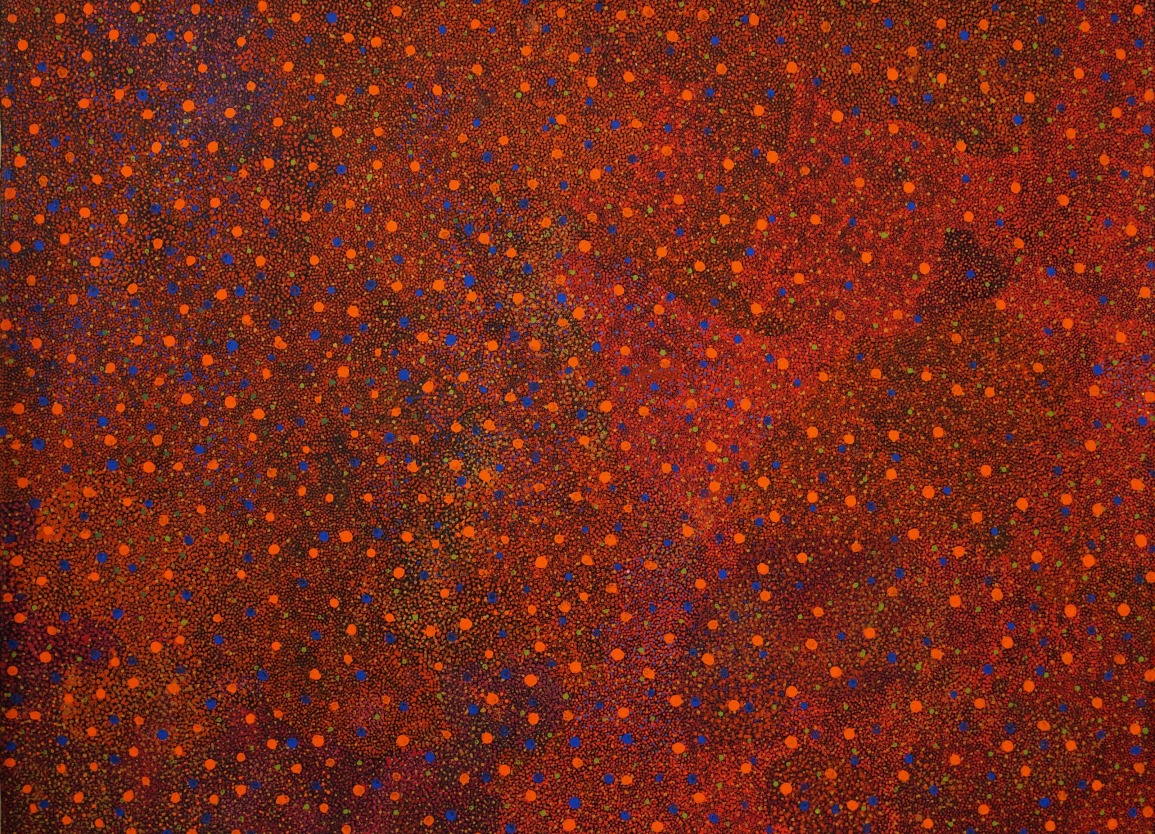Art & Life at Camel Camp on Utopia Homelands
Sonja Chalmers is the co-ordinator of an independent arts centre at Camel Camp, Utopia. Here she talks about her work with the artists.

Can you tell us a bit about Camel Camp?
Camel Camp is on Utopia, an Aboriginal freehold property about 250 kilometers northeast of Alice Springs. Camel Camp is one of around 20 communities on Utopia. It is a traditional community with many senior women living there, and many senior families.
What are your family connections to the Utopia homelands?
My grandfather was a pioneer and settled in the Northern Territory in the 1920s. He and his wife and four children came over from Glen Innes in a covered buggy wagon with 200 sheep and some chooks. The journey took two years. They settled the property next door to Utopia. One of his sons acquired Utopia in the late 1960s and eventually sold it back the government in the 1970s and it then became Aboriginal freehold.
We’ve grown up alongside the Utopia families for many years. A lot of the families that are now in Utopia were on MacDonald Downs growing up with my grandfather. The connection between families is about third generation, fourth generation now at Camel Camp.

Can you tell me something about what’s it’s like working with the artists from Camel Camp?
It’s lovely. The artist’s come to socialise. We have a community store, which is about 30 km South of Camel Camp. I invite the artists in every month to do painting workshops. I have an art shed at Red Gum. It’s just a little kind of corrugated tin art shed, where the artists paint. We either paint outside, or in the shed. It’s really collaborative. The artists are very chatty and happy and they love painting. It gives them a sense of industriousness, and they love the whole get-together. All the communities come in to the store so it’s really a fabulous sort of meeting place for them while they work.
Can you describe the qualities and the style of the content of the artworks?
The Camel Camp women have a Dreaming which is their Bush Plum Dreaming. Bush plums are a delicious little fruit that used to be a great source of traditional food. The Camel Camp women paint the Bush Plum Dreaming. There is beautiful dot work, some large dots, some are fine dot works. You can see representations of the topography of the country, bush plums and the changing seasonal influences of the bush plum. There are purples and pinks and greens and browns, with beautiful variations in shade.
The artists pass their painting style onto their grandchildren, the female grandchildren. Today some of the 18 to 24 year olds are painting Bush Plum Dreaming.

What are the qualities of the artists that you think provide the best way forward in the future?
Kathleen and Polly Ngala love what they’re doing, they believe in it. I think this is passed on to the children. We’re starting some workshops for the children very soon. That’s extremely important, because a lot of the women are getting too old to paint.
Can you tell me about the current business, the outback stopover?
I was born in the Northern Territory, and grew up there as a child until I was about 15. I had an absence of about 35 years. Now we have a freehold property called Red Gum with an outback community store for the Utopia community. We’re developing an entertainment centre as well. We carry a wide variety of food including traditional food. I roast kangaroo tails by the dozen each week. We carry lots of fresh vegetables. It is open for all the community members to come in to Red Gum and visit the store. Some stay there all day. It’s not just like you go shopping. Community members come in and chat. They sit under the tree and meet with other family members. They might go off hunting together. Hunting is still big in this part of the life here.

How would you like to see the relationship between you and the artists over the next ten years?
We have a fabulous relationship with the artists, I just love working with them. It’s fun and they produce such beautiful work. Here we are in the middle of a desert, and these wonderful works emerge. The artists have an extraordinary way with colour. Their eye is extraordinary, their sense of perspective and the way they see things is so different to the Western view of things.
I’d just like it to go on as it is. It will change, of course, but I would like to see a lot more young people coming in to the business. That’s what we’re trying to develop at the moment.
What is the best thing for galleries to do for artists?
Pay them well. Promote artists with talent and encourage them to paint.
What else would you like people to know about this particular exhibition that’s coming?
The core of this exhibition is Bush Plum Dreaming. The paintings range in size from about a metre square, up to 2 by 3 metres. There will also be a few wooden sculptures.

The senior Ngala women at Camel Camp are in their 80s and 90s. These women are extraordinary artists, they’ve had huge careers. Their work is in public collections in Canberra, Melbourne, the National Gallery of Victoria, the South Australian Art Gallery, and GOMA in Brisbane and in public institutions. Their work is widely represented in collections overseas.
This exhibition is a rare chance to see the work of all three of the Ngala sisters, together with their younger counterparts the Petyarre (ed. from ‘Pitjara Hunter’) cousins Gloria and Kathleen. They’ve maintained a traditional bush lifestyle, but are much younger, a generation younger. They do very different work, but it’s all based on women’s business and traditional values.
It’s an extraordinary opportunity to see both families here.
See More About Bush Plum Dreaming
Explore More Artists Of Utopia
View More Paintings From Camel Camp
